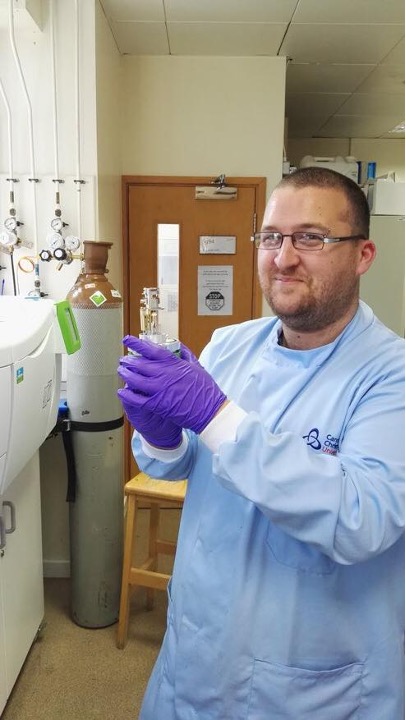Dr Joe Burman
Subject Leader - Science, Engineering and Aviation
Roles
- Lecturer for multiple units across level 5 and 6, HN and undergraduate degree programmes including core units; Multicellular organisms, Sustainability and Interdependence, The Living Environment, Ecology and Ecosystems, Earth Science, Environmental Awareness, as well as Communication and ICT.
- Personal academic tutor (PAT) for Level 5
- Course director for Access To Health And Life Sciences (Swap) Higher
Qualifications
- Post-Graduate Certificate in Learning and Teaching 2014
- PhD in Ecology 2013 Canterbury Christ Church University
- BSc in Biosciences 2007 Canterbury Christ Church University
Contact
Teaching Experience
I have been teaching for more than 10 years in the higher education sector. In my previous work I taught subjects including Core and Foundation Biology and Chemistry, Microbiology, Animal Anatomy and Physiology, Animal Pests and Diseases, Agroecology, Pests Parasites and Pathogens, Animal Behavioural Ecology, Introduction to Ecology and Applied Biological Chemistry.
I work with and have supervised several PhD and Masters students to completion (internally and externally) on the PheroBio project (Pheromones for Biodiversity Conservation) as well as dozens of undergraduate dissertations ranging from molecular biology projects to field ecology and conservation. I also hold a PGCLT qualification, making me a Fellow of the Higher Education Academy.
Experience
I currently hold the position of lecturer in science at UHI Perth. Previously I was Senior Lecturer in Biology/Animal Science in the Life Sciences Section at Canterbury Christ Church University (CCCU). I carried out my undergraduate and postgraduate studies at CCCU before obtaining a postdoctoral research position at the Swedish University of Agricultural Science (SLU), where I conducted research into applied insect chemical ecology.
My primary interest is insect ecology, and how insect science can be used to solve problems in agriculture and biodiversity conservation. My PhD examined the interactions between male-killing endosymbiotic bacteria and biological control agents, which included research into aspects of insect chemical ecology, molecular biology, genetics and pure ecology.
External/Industry Activities
From 2014-2017 I was a research consultant for Thanet Earth, the UK’s largest and most high-tech greenhouse complex. I coordinated a project that produced pioneering digital imaging tools for quality control throughout their fresh produce supply chain. During this project I was featured on the BBC documentary ‘Tomorrow’s Food’ with Dara O-Briain.
Research Interests
I have been working towards the world’s first implementation of insect pheromones to monitor rare and endangered insects. I work with conservation organisations wishing to use insect pheromones for national monitoring programmesand have developed novel attractants for some of Europe's most threatened species of insect, including some of Scotland’s rarest species. Recent work on 'Kentish Glory moth' and 'Barred Tooth Striped moth' is publicised across social media and the web via Scottish Natural Heritage (now NatureScot), Butterfly Conservation UK/Scotland, RSPB, The Cairngorms National Park Authority and many others.
See my GoogleScholar profile here: scholar.google.co.uk/citations?user=b3UjFSYAAAAJ&hl=en
Selected Publications
O'Neill H., Twiss S., Stephens P., Mason T., Ryrholm N. and Burman J. (2022) The Importance of Direct and Indirect Trophic Interactions in Determining the Presence of a Rare Day-Flying Moth. Oecologia.
Bergman, K.O., Burman, J., Jonason, D., Larsson, M.C., Ryrholm, N., Westerberg, L. and Milberg, P., 2019. Clear-cuts are temporary habitats, not matrix, for endangered grassland burnet moths (Zygaena spp.). Journal of Insect Conservation, pp.1-9.
Oleander, A., Hall, D.R., Bray, D.P. and Burman, J.P., 2019. Identification of female sex pheromone for monitoring the Barred Tooth Striped Moth, Trichopteryx polycommata, a priority conservation species. Journal of chemical ecology, 45(8), pp.649-656.
Molander, M.A., Winde, I.B., Burman, J., Nyabuga, F.N., Lindblom, T.U., Hanks, L.M., Millar, J.G. and Larsson, M.C., 2019. Common cerambycid pheromone components as attractants for longhorn beetles (Cerambycidae) breeding in ephemeral oak substrates in Northern Europe. Journal of chemical ecology, 45(7), pp.537-548.
Burman, J., Westerberg, L., Ostrow, S., Ryrholm, N., Bergman, K.O., Winde, I., Nyabuga, F.N., Larsson, M.C. and Milberg, P., 2016. Revealing hidden species distribution with pheromones: the case of Synanthedonvespiformis (Lepidoptera: Sesiidae) in Sweden. Journal of insect conservation, 20(1), pp.11-21.
Oleander, A., Thackery, D. and Burman, J., 2015. The effect of exposure to synthetic pheromone lures on male Zygaena filipendulae mating behaviour: implications for monitoring species of conservation interest. Journal of insect conservation, 19(3), pp.539-546.
Andersson, K., Bergman, K.O., Andersson, F., Hedenström, E., Jansson, N., Burman, J., Winde, I., Larsson, M.C. and Milberg, P., 2014. High-accuracy sampling of saproxylic diversity indicators at regional scales with pheromones: the case of Elater ferrugineus (Coleoptera, Elateridae). Biological conservation, 171, pp.156-166.
Musa, N., Andersson, K., Burman, J., Andersson, F., Hedenström, E., Jansson, N., Paltto, H., Westerberg, L., Winde, I., Larsson, M.C. and Bergman, K.O., 2013. Using sex pheromone and a multi-scale approach to predict the distribution of a rare saproxylic beetle. PLoS One, 8(6), p.e66149.
